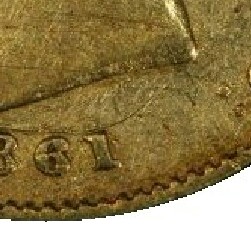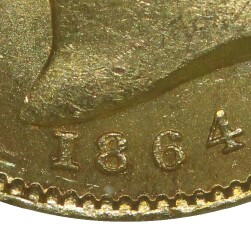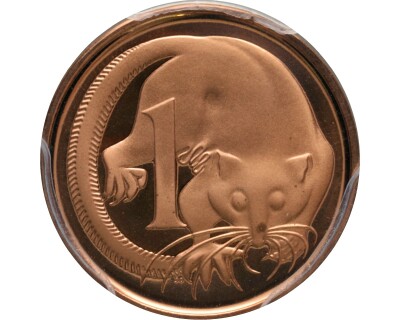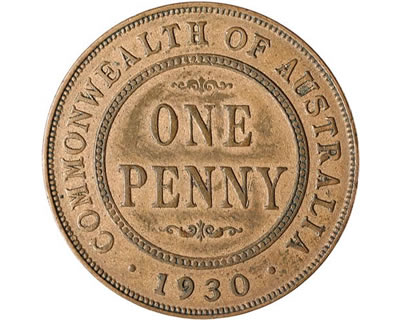Half Sovereigns of the Sydney Mint (1853 - 1869)
Type II - Wreathed Bust (cont)
The 1860 is the key date of wreathed bust, after the 1855 and excluding the varieties. Current estimates put the survival count at about 200 to 250 pieces making it very scarce, particularly above the VF level in a problem-free state. A number of AU grade pieces are known though these are very scarce and given the disproportionate number of very high grade surviving examples, it's reasonable to suggest that at least one high grade hoard had surfaced.
In Mar 2002 Noble Numismatics sold an 1860/59 overdate half sovereign, said to be from Spink Australia sale 30 (lot 1439). Unfortunately the lot was not illustrated and no further examples have been sighted so we could not adequately confirm its existence.
The 1861 is generally considered one of the easier half sovereign years though one should not underestimate how difficult the issue can be to source in higher grades. An 1861/0 overdate exists and it is perhaps the best known overdate in the series and the only Sydney mint overdate identified at the Reserve Bank of Australia sale with four of this type sold being through the sale and about a dozen others have appeared on the market. Ironically, the more common overdates sell for a greater premium than the scarcer types - this is due to the awareness that the frequency of appearances supply.
The overdate is identified by the presence of the ring of the previous 0 on the right of the 1 as in figure

An addition to the overdate, an interesting variety discovered by a Western Australian collector has surfaced bearing the reverse of the reworked pattern matrix used previously
in 1856 except dated 1861. These can be identified by the same means as the 1856 alternate reverse type in figure
Mint records do not show that any half sovereigns were produced in 1862, despite this they are certainly known to exist. It is likely that the high mintage figure of 558,500 quoted for 1863 also includes coins dated 1863. This would also conform to the low survival counts of the two dates, both of which are very scarce in any grade. No varieties are noted for either year.
A similar situation occurred in 1865 with only a mintage figure of 282,000 having been recorded. It is likely that the mintage figure includes both issues dated 1864 and 1865 as the branch mint in Sydney did not report any coins struck in 1864.
The 1864 comes in an interesting variety where the 1 of the date is replaced with an I or Roman 1 as the variety is often called as can be seen in figure


Although mint reports show that no half sovereigns were struck at Sydney in 1866, these are certainly confirmed to exist and it would seem that the 62,000 struck in 1867 and the 154,000 struck in 1869 were dated 1866. This brings the total mintage of the issue to 216,000. The 1866 is quite scarce, particularly in high grades with very few examples surfacing at the AU level and above. The date is often seen with a soft central strike, a byproduct of re-using the flatter dies likely intended for the year's proof strike.
Proofs of this type were struck dated 1855, 1856, 1857 and 1866. Three pairs of 1855 sovereign and half sovereign were struck though the half sovereign die was later used for commercial strikes. A similar set of 1856 pairs were also produced. Proof of record strikes were struck in 1857 along with their sovereign pair while a pair of 1866 proofs were discovered in the 1970s in London having been struck as part of the Sydney mint's display at the inter-Colonial Exhibition of 1866 and the International Exposition in Paris of 1867.
The Sydney mint series was the first official coinage to bear the country's name AUSTRALIA proudly on the reverse and represents a challenge to any collector, particuarly if sought in higher grades. While most dates are fairly affordable in low grades and only tending towards a small premium above bullion value, they are all generally quite scarce, particuarly the varieties and can still require a significant degree of patience to complete.









